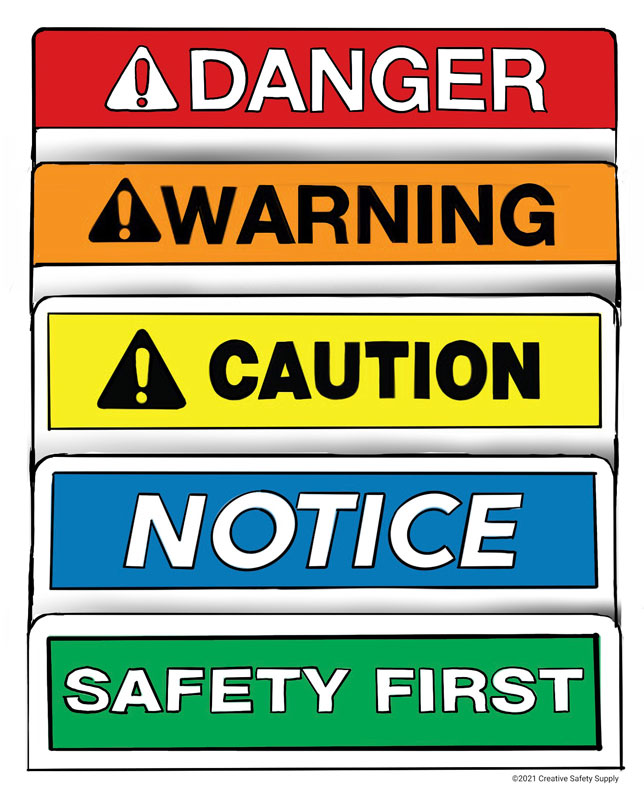

In safety signage, colors are used as visual clues to provide information about hazards, safety, or instructions, depending on the nature of the workplace. According to the Health and Safety Regulations, red sign color indicates fire equipment or presence of hazards, yellow sign color signifies caution or warnings, blue sign color symbolizes mandatory actions or organizational protocols, green signifies emergency exit signs or first aid equipment.
Each color has a specific meaning. Here’s a detailed overview on the meaning behind each color:
Red:
These safety signs are universally associated with danger and prohibition. They indicate the presence of potential hazards or the need to stop or take immediate action to prevent accidents.
Yellow:
Yellow safety signs serve as a cautionary measure, indicating potential hazards or conditions that could lead to accidents or injuries if not approached with care.
Green:
Green safety signs signify safety-related information, including emergency exits, first aid stations, and safety equipment. They provide guidance on safety procedures and the location of emergency resources.
Blue:
Blue safety signs convey mandatory instructions or provide information that helps individuals understand specific requirements or protocols that must be followed.
Orange:
Orange safety signs are typically used in construction and other high-risk environments to indicate potential hazards or cautionary information related to equipment, machinery, or traffic management.
Purple:
Purple safety signs are specific to areas where there is a risk of radiation exposure. They indicate restricted access and the need for special precautions.
Understanding the meaning behind different colors of safety signs is paramount for maintaining a safe and efficient environment. From workplaces to public spaces, safety signs are an integral aspect of risk management and accident prevention. By integrating safety signage with related concepts like emergency preparedness and safety training, organizations and individuals can create a culture of safety that protects lives and enhances overall efficiency. Embracing the visual language of safety is not just a regulatory requirement; it's a commitment to the well-being and productivity of all.
FAQs
Q: What do different colors of safety signs signify?
A: Safety signs use standardized colors to convey specific messages related to safety and hazards. Understanding these color codes is crucial for ensuring safety in various environments.
Q: Why is it important to be familiar with safety sign colors?
A: Familiarity with safety sign colors helps individuals quickly and accurately interpret the information conveyed by a sign. This knowledge is essential for making informed decisions regarding safety precautions and actions to take in different situations.
Q: What are some common shapes used in safety signs?
A: Safety signs often use standardized shapes to convey specific meanings. For example, a circular sign with a diagonal line indicates prohibition, while a triangular sign is used for warnings. Understanding these shapes further enhances the effectiveness of safety communication.
Q: How do safety signs contribute to a safer environment?
A: Safety signs provide visual cues and information that guide individuals in making safe decisions. They help prevent accidents, identify potential hazards, and provide instructions for emergency response. Properly placed and understood safety signs significantly contribute to creating a safer environment.
Similar Questions
- What are types of signs in the workplace?
- What does it mean to have OSHA/ANSI compliant signs?
- What do different symbols on safety signs mean?
- What Are the most Common Types of Warning Signs in Industrial Settings?
- Why are safety signs important?
- Are safety signs just for the wall?
- What do black and white traffic signs mean?
- Where are safety signs needed?
- What are the Safety Signs that Every Workplace Should Display?


